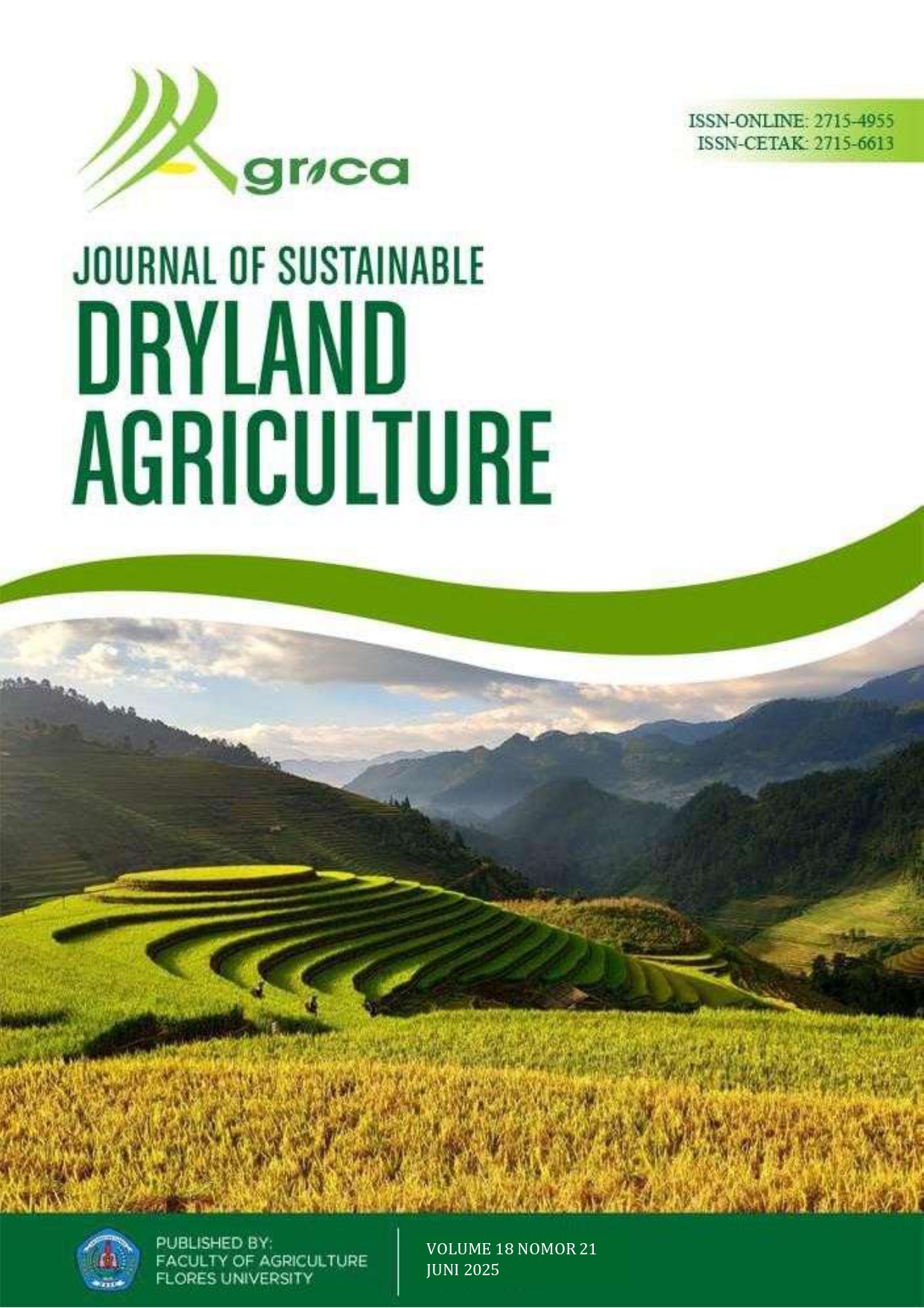ANALISIS KOMPARATIF PENDAPATAN PETANI KELAPA SAWIT SWADAYA TERHADAP POLA KONSUMSI PADA UMUR TANAMAN PRODUKTIF DAN NON PRODUKTIF DI DESA SUNGAI RENGIT KABUPATEN BANYUASIN
DOI:
https://doi.org/10.37478/agr.v18i1.4947Abstract
Palm oil is one of the plantation commodities that play an important role in the Indonesian economy. Banyuasin Regency is currently the largest supplier of palm oil. This study aims to analyze the contribution of independent palm oil income to the total revenue of farmer families in productive and non-productive crops, as well as to analyze the differences in farmer consumption patterns at the age of productive and non-productive crops in Sungai Rengit Village, Banyuasin Regency. This research was conducted in Sungai Rengit Village, Banyuasin Regency, from July 2021 to June 2022 using primary data collected through interviews using questionnaires. A total of 80 independent farmers, consisting of 40 productive and 40 non-productive crop farmers, were selected purposively. Data analysis was carried out using t-tests and descriptive statistics. The results of the study showed that the income of oil palm farmers was influenced by other business income. Farmers' consumption patterns show that farmers' welfare, both in productive and non-productive groups, is classified as prosperous based on the proportion of food and non-food consumption expenditure, where 40.49 percent of the portion is used for food needs and 59.51 percent for non-food needs. Meanwhile, oil palm farmer households with non-productive trees also have a balanced consumption mapping, with 40.86 percent used for food needs and 59.14 percent used for non-food consumption.
Downloads
Keywords:
Consumption Patterns, Income, Palm OilReferences
Arlin. 2017. Pola Konsumsi Pangan Pada Rumah Tangga Petani Di Desa Ruguk Kecamatan Ketapang Kabupaten Lampung Selatan. Jurnal Agribisnis. Vol 5. No. 5. Fakultas Pertanian. Universitas Lampung. Bandar Lampung.
Badan Pusat Statistik. 2019. Indonesian Oil Palm Statistics. https://www.bps.go.id. Diakses 30 Januari 2022. Jakarta.
Badan Pusat Statistik. 2022. Luas Tanaman Perkebunan. Sumatera Selatan. https://sumsel.bps.go.id/indicator/54/414/1/luas-tanamanperkebunan.html. Diakses 3 Februari 2022.
Badan Pusat Statistik. 2022. Luas Areal dan Produksi Perkebunan Kelapa Sawit Rakyat Menurut Kecamatan 2018-2020. Banyuasin. https://banyuasinkab.bps.go.id/indicator/54/147/1/luas-areal-dan-produksi- perkebunan-kelapa-sawit-rakyat-menurut-kecamatan.html. Diakses 6 Februari 2022.
Carera, V. 2017. Hubungan Antara Pendapatan Dengan Pola Konsumsi Masyarakat Nelayan Di Desa Ketapang Kecematan Padang Cermin Kabupaten Pesawaran. Skripsi S1.Universitas Lampung. Lampung.
Dewi, R., dan Supriyadi, A. 2021. Sustainable Development in Palm Oil Plantation: Challenges and Opportunities. Journal of Agribusiness Management, 9(3):45–56.
Direktorat Jenderal Perkebunan. 2019. Statistik Perkebunan Indonesia. Jakarta. https://www.ditjenbun.pertanian.go.id. Diakses 30 Januari 20222.
Gujarati, 2010. Dasar-dasar Ekonometrika. Jakarta:Salemba Empat.
Harahap, Y. P., dan Junaedi, A. 2017. Manajemen Panen Kelapa Sawit (Elaeis Guineensis Jacq.) Berdasarkan Kriteria Ispo Dan Rspo di Kebun Sei Batang Ulak, Kabupaten Kampar, Riau. Buletin Agrohorti. 5(2):187–195. Https://Doi.Org/10.29244/Agrob.V5i2.16796.
Hasibuan, M, dan Rizal, A. 2021. F. Journal of Environmental Economics. 14(3):75–89.
Ilham, N., Sinaga, B. M. 2007. Penggunaan Pangsa Pengeluaran Pangan Sebagai Indikator Komposit Ketahanan Pangan. SOCA. 7(3):1-22.
Lubis, M.F. 2018. Analisis Produksi Kelapa Sawit di Kebun Buatan Kabupaten Pelalawan Riau. Jurnal Bul. Agrohorti. 6(2):281-286.
Noerrizki, A. M., Putri, T. K, dan Ernah, E. 2019. Utilization Of Palm Oil Waste As Bioenergy. Sustinere. Journal Of Environment And Sustainability. 3(1):48–66.
Setiawan, R, dan Wahyuni, S. 2020. Labor Dynamics in the Palm Oil Plantation Sector. Agro-Economic Journal. 12(2):142–154.
Santoso, B, et al. 2020. Economic Contribution of Independent Palm Oil Farmers in Indonesia. International Journal of Agricultural Economics. 12(2):88–98.
Rahman, A., dan Putri, T. 2022. Household Income Diversification Among Oil Palm Farmers. Asian Agricultural Studies. 15(1):31–42.
Santoso, B, et al. 2020. Economic Contribution of Independent Palm Oil Farmers in Indonesia. International Journal of Agricultural Economics. 12(2):88–98.
Yulianti, D, dan Pratama, A. 2019. Palm Oil as an Economic Driver in Rural Areas: Case Studies from Indonesia. Journal of Rural Development. 8(3):66–77.
Wijaya, A, dan Nugraha, M. 2022. Household Expenditure and Welfare Among Oil Palm Farmers. Journal of Agricultural Economics and Development. 10(1):55–67.
Wulandari, E, dan Haryanto, R. 2020. Pengeluaran total: Analisis pengeluaran untuk kebutuhan pangan dan non-pangan. Jurnal Ekonomi dan Bisnis. 12(3):45-60.
Downloads
Published
How to Cite
Issue
Section
License
Copyright (c) 2025 Aisyah Absharina, Ratih Lestari

This work is licensed under a Creative Commons Attribution-ShareAlike 4.0 International License.














